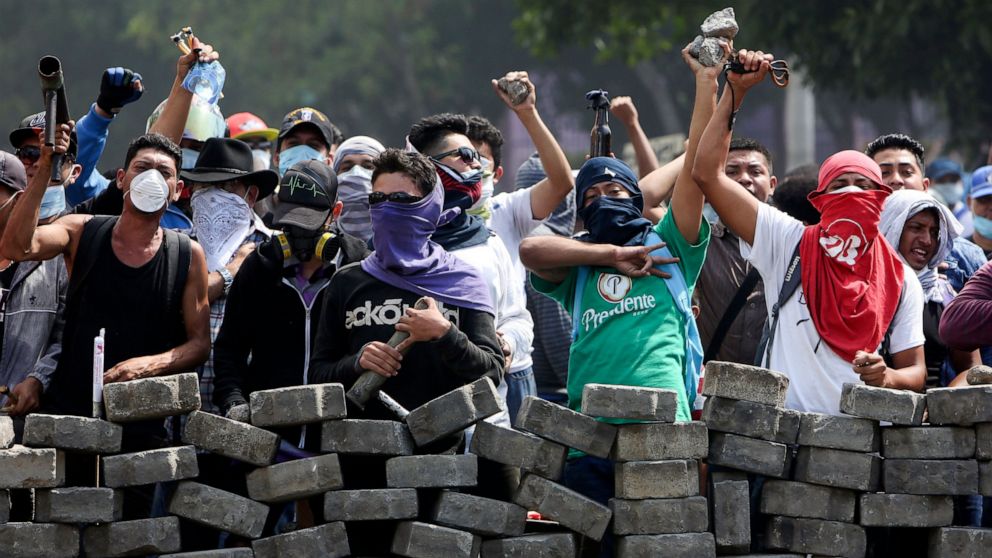[ad_1]
LAREDO, Texas (NewsNation Now) — The World Trade Bridge in Laredo plays an important role in the supply chain for Mexico and South Texas, but it also is an alluring entry point for drug traffickers who try to get illicit goods through the port.
About 7,000 commercial trucks pass through the port of entry every day – 2.5 million per year, bringing in $139 billion in imports per year to the U.S.
Twice it has surpassed Los Angeles as the No. 1 port of entry for goods into the country.
In fact, about 45% of all goods coming in from Mexico cross through Laredo, which connects to busy Interstate 35, a major artery to the Midwest.
“We think of Laredo as the rivers of trade extending to all parts of the United States,” said CBP Laredo Port Director Albert Flores.
But with each truck heading north also comes the risk of drugs and other illegal items also coming across the U.S. border. In an effort to curb the flow of drugs and other illegal goods from entering the country, U.S. Customs and Border Protection agents are implementing large X-ray scanners to search vehicles.
Officials are testing a pilot program at the bridge. The program, called the Multi-Energy Portal, involves dozens of computerized scanning devices and CBP personnel who analyze the data to locate and confiscate illegal goods.
On Wednesday, Flores gave NewsNation and Border Report a tour of the expansive commercial port of entry that connects Laredo to Nuevo Laredo, Mexico. He said the new pilot program allows CBP officers to scan inside cargo and detect minute differences in packaging or other “anomalies” that might not have been detected by the human eye.
With the new technology, they have located drugs smuggled in the bed of cabs, in fire extinguishers and inside building materials, he said.
CBP officers sit at a bank of computers in a portable building looking at screens of data and information and photos of trucks that are constantly streaming across.
An hour before a truck crosses the bridge, the driver must send a detailed list of all goods inside. CBP officers then use that data with real-time images of the cargo hold and compare what they are seeing to what they should see.
Sometimes a mere smudge or imbalance of packages can alert them that something might be amiss.
A crooked seal on a package, broken rivet on the trailer, or nervousness of a driver can alert an officer to dig deeper.
“It’s a gauntlet of different inspections inside the lot,” Flores said.
Suspicious vehicles are then redirected to a secondary inspection area where officers manually go through the truck. Cargo also sometimes is sent to a dock where joint inspectors from the United States and Mexico open the tailgate and peruse the contents.
On Wednesday, CBP officers cut open bags of black charcoal, dumping it into a pile looking for items that did not belong.
In a nearby office, other officers alongside agents with the U.S. Department of Agriculture scanned flowers and wood and showed insects that were found in cargo recently that are not allowed into the United States and could damage U.S. crops and wildlife.
Currently, only about 15% of all commercial trucks at the World Trade Bridge are sent for additional screening and the Multi-Energy Portal, for which several companies have government contracts to supply services.
But Flores said the program could be a “game-changer” for port officials in helping to alert officers as to potential dangerous loads. And he hopes the program is soon given the green light to be used on all trucks, perhaps starting midway on the international bridge.
With officers processing 80 to 100 commercial trucks per hour at the World Trade Bridge, he said this “next-generation technology” could speed up inspection times and help ensure the American public that only what is supposed to cross the border is making it to the other side.
“You’re dealing with big conveyances so you’re going to get big loads of contraband,” Flores said.
Decades ago, trailers would try to cross marijuana over the border, Flores said. Now it is the “harder narcotics” that transnational criminal organizations are trying to get across.
U.S. Customs and Border Protection reported a 1,066% increase in the amount of fentanyl seized in the last fiscal year in south Texas. Total, 87,652 pounds of narcotics, including 588 pounds of fentanyl, were seized at eight ports from Brownsville to Del Rio.
“Five pounds of fentanyl is equivalent to a truckload of marijuana but a lot easier to come across because you’re dealing with a smaller package. So we realize that cartels are adapting,” Flores said.
The program currently is being tested in the South Texas cities of Laredo and Brownsville, five hours east. If successful, he said CBP plans to expand to the rest of the United States.
[ad_2]
Source link




















